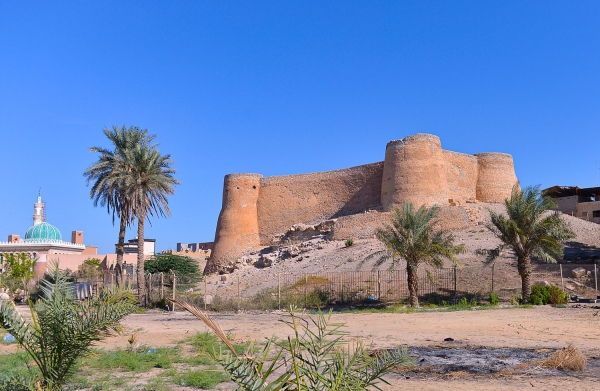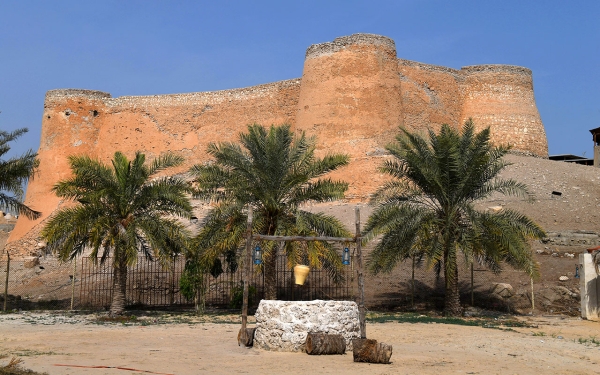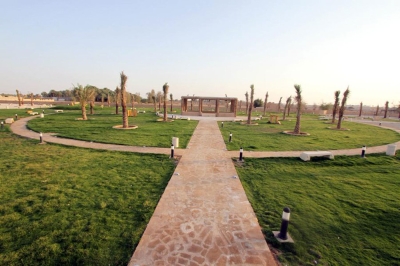

Tarout Castle is a historic fortress located on Tarout Island in al-Qatif Governorate, within the Eastern Province of the Kingdom of Saudi Arabia. The castle sits atop Tarout Hill, southwest of the old town. The site where the castle was built has revealed artifacts dating back approximately 4,300 years BCE. Tarout Castle is located approximately thirty km from Dammam City and can be accessed via bridges that connect the island to the mainland.
Tarout Castle history
Inscriptions found on Tarout Castle, written in cuneiform, suggest that the castle's history may date back to the end of the third millennium BCE. There are indications that the people of al-Qatif built the castle to repel Portuguese attacks. It is also believed that the Portuguese themselves constructed the castle during their occupation of the region to establish their presence, despite their relatively short stay compared to other powers. However, Turkish reports, notably those authored by Nawwaf Pasha, the Ottoman commander of the campaigns in al-Ahsa and al-Qatif in 1872, suggest that Tarout Castle was one of the fortresses established by the First Saudi State to defend against attacks coming from the sea.
Tarout Castle area
Tarout Castle covers an area of no more than six hundred m² and, when viewed from above, resembles the shape of a crab. The height of its walls ranges between four and six m, with an additional meter added later. The walls, originally one m thick, were later reinforced by an additional half m, making the final thickness approximately 1.5 m. The castle does not contain any rooms for housing soldiers or storing supplies and ammunition.
Tarout Castle structure
The architectural design of Tarout Castle resembles the irregular Portuguese style observed in Omani forts. The castle originally had four conical towers, but only the northwestern and southwestern towers are visible in all historical photographs. The two eastern towers do not appear in any of these old images. The southeastern tower was damaged during military operations by the First Saudi State to liberate al-Ahsa and al-Qatif around 1792. It remained standing until 1917 when it collapsed onto a nearby residence. The castle was restored during the Saudi era in 1984.
The northeastern tower, which overlooks the old Tarout market, was completely destroyed during that period. In addition to the main towers, there are four other towers situated along the outer wall that surrounds both the village and the castle. These are the Tower of Bayt Qais, Tower of Ibn Dubais, Tower of Bayt Abdul Wahid, and Tower of al-Rafaa.
Tarout Castle civilizations
Tarout Castle has witnessed numerous civilizations and significant historical events. Locally known as "Il Castello," the castle is rich with artifacts and inscriptions dating back to the third millennium BCE. Remarkably, its walls remain intact to this day.
Some historical accounts suggest that Tarout Castle was built on the site of a temple dedicated to Ishtar, one of the most famous deities of Mesopotamian civilizations, which housed a statue of her. The name of Tarout Island is believed to be derived from this goddess. Other sources indicate that Ishtarot was the Phoenician goddess of beauty and love, and she was also mentioned by Greek historians who referred to her as Tyros, while the Greek geographer Ptolemy called her Taro. The artifacts discovered in the region include remnants from several ancient civilizations, dating back between four thousand and five thousand BCE, belonging to the Ubaid and Barbar civilizations.
Events around Tarout Castle
Al-Qatif Governorate Municipality, affiliated with the Eastern Province Municipality, in collaboration with the Tarout Charitable Society, organized two editions of the "Tarout Castle Orchard" events in 2022 and 2023, held in Tarout Castle Square. The events featured artistic performances, traditional costumes, popular foods, cultural and entertainment activities, workshops, children's art activities, booths for local artisans, handmade crafts, an art exhibition, live painting sessions, art workshops, a segment featuring the entrance of sailors and the Nahham, as well as performances by folk bands.
The events also included an evening titled "Tarout Island: Heritage and History," featuring guided tours of the ancient Tarout Castle and the historic neighborhood, as well as displays of traditional crafts, old professions, and the cultural heritage of the region.
Tarout Castle development
The development plan for Darin and Tarout Island, approved by the Council of Ministers in 2022, includes the establishment of an organization dedicated to the development of Darin and Tarout Island, as well as the restoration of Tarout Castle. The development efforts are being carried out by the Ministry of Municipalities and Housing and the Sharqia Development Authority as part of the Quality of Life Program initiatives to achieve Saudi Vision 2030 goals.
Related quizzes
Related articles


